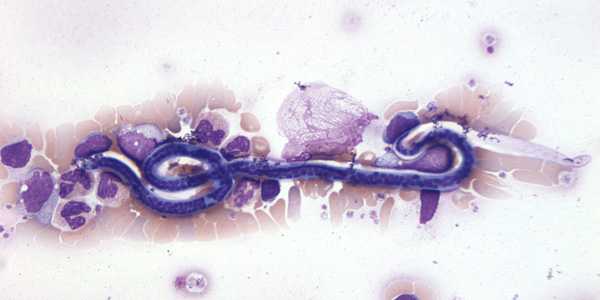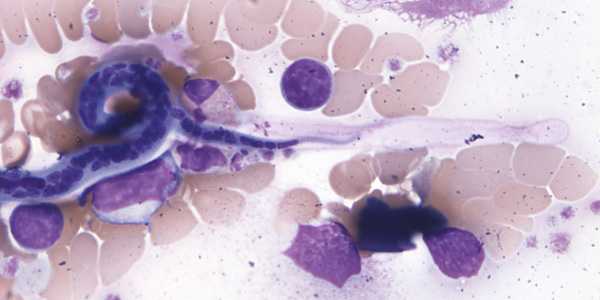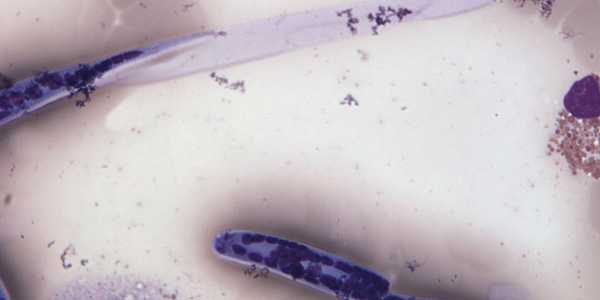
Case #206 - June, 2007
An immigrant from West Africa arrived in the United States after living in Liberia and Sierra Leone. The individual was admitted to a medical center with shortness of breath and pulmonary tuberculosis was suspected. An x-ray was ordered, an acid-fast bacillus (AFB) smear was made, and blood was collected to determine platelet counts and hemoglobin level. A Wright-Giemsa stained blood smear was made and reviewed; the objects seen on the thin smear were approximately 250 µm (based on the relative size of the white blood cells). Figures A and B show the same organism, captured from the thin smear at 250× and 1000× magnification respectively. Figures C and D were both taken at 1000× magnification. What is your diagnosis? Based on what criteria?

Image A

Figure B

Figure C

Figure D
Case Answer
This was a case of Bancroft’s filariasis caused by Wuchereria bancrofti. Diagnostic features were:
- the size of the microfilaria, which was consistent with that of W. bancrofti (244-296 µm).
- the presence of a sheath.
- nuclei that were not present all the way to the end of the pointed tail (anucleate tail).
- a relatively short cephalic space (the area where there are no nuclei in the anterior end or head).
When a patient is from, or has travel history to, areas endemic for more than one causative agent of filariasis, it is important that an accurate diagnosis be made. This is essential in guiding treatment decisions.
More on: Lymphatic Filariasis
This case and images were kindly contributed by The Hennepin County Medical Center.
Images presented in the monthly case studies are from specimens submitted for diagnosis or archiving. On rare occasions, clinical histories given may be partly fictitious.
DPDx is an education resource designed for health professionals and laboratory scientists. For an overview including prevention and control visit www.cdc.gov/parasites/.
- Page last reviewed: August 24, 2016
- Page last updated: August 24, 2016
- Content source:
- Global Health – Division of Parasitic Diseases and Malaria
- Notice: Linking to a non-federal site does not constitute an endorsement by HHS, CDC or any of its employees of the sponsors or the information and products presented on the site.
- Maintained By:


 ShareCompartir
ShareCompartir